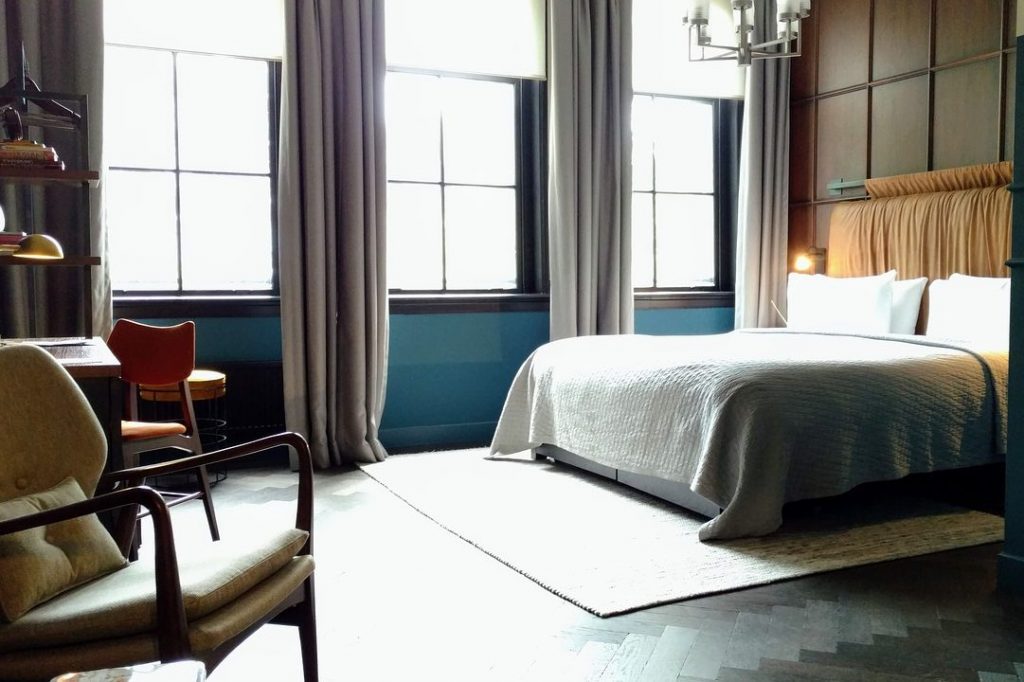Skift Take
Job gains are great news for hotels. But the U.S. Labor Department figures only paint one part of the full picture of an extremely troubled industry.
The U.S. hotel industry continues to add jobs following a catastrophic level of unemployment seen in April during the coronavirus pandemic. But industry leaders aren’t exactly celebrating.
U.S. hotel unemployment was 29.9 percent in September, a nearly 20-point improvement from the 48.9 percent posted in April, the U.S. Bureau of Labor Statistics reported Friday. But total U.S. unemployment remains significantly better than the hotel sector. The national unemployment number was 7.9 percent for the month.
While 51,000 hotel jobs were added in September, industry analysts continue to emphasize hotels are faring significantly worse relative to the overall economy.
“Unfortunately, the unemployment rate is atrociously high and, without some form of government-sponsored relief, will likely get worse over time. Restaurants and hotels throughout many of the top 25 and, frankly, all the markets remain closed,” said Evan Weiss, chief operating officer at LW Hospitality Advisors. “All too many of these closures are more likely to be permanent as the devastating economic effects of this pandemic continue.”
While job gains are good news, the hotel industry needs more than furlough callbacks to survive to the other side of the pandemic. Some level of financial aid for struggling hotel owners is crucial to avoiding long-term unemployment, Weiss added.
Hotel employment is still down 34 percent from 2019 levels, according to Jamie Lane, senior director of research at CBRE Hotels. Overall employment is 6.5 percent off from last year’s levels while the food service industry saw an 18 percent decline.
“For hotels, the story is not bright,” said Del Ross, chief revenue officer at hotel labor management and data company Hotel Effectiveness. “It’s not a good story.”
Companies like Wyndham and hotel operator Aimbridge Hospitality use Hotel Effectiveness’ labor management system. Ross isn’t exactly pleased with Friday’s jobs report, noting its narrow scope of who is deemed a hotel worker doesn’t take into account employees who work beyond guest rooms and in areas like meeting facilities.
When all sectors of the hotel industry are included, Ross estimates the unemployment figure actually remains at 49 percent.
Hotel Effectiveness data even shows a staggering 199,000-job national loss since late August, due to a pullback in summer leisure travel.
But that may be the worst of upcoming job declines. If there is something to be positive about, it is the fact that occupancy rates at U.S. hotels have generally hovered just shy of 50 percent since Labor Day, according to STR. That signals there hasn’t been any further plummet in leisure travel heading into the fall.
“Occupancy has held steady for the last few weeks which is good news, which may be in part due to the work and learn-from-anywhere environment,” said American Hotel & Lodging Association CEO Chip Rogers. “It’s just a question from the revenue side if they can make it to spring.”
The AHLA and many hotel companies continue to lobby Congress to pass a fresh round of economic stimulus to buoy the industry through winter months of expected low travel demand. While Democrats and Republicans continue to negotiate on a potential deal, it only exacerbates the financial misery of many U.S. hoteliers and the potential employment fallout.
Roughly half of U.S. hoteliers claim their property is in danger of foreclosure due to the pandemic, according to an AHLA report.
“It seems like, from a rhetoric and offer standpoint, we’re getting closer,” Rogers said. “The sad thing is time is running out, and every day that goes by brings us more hoteliers closing up shop for good and brings us closer to the election and everyone leaving Washington. Let’s get to a deal, and let’s get there quickly.”
Have a confidential tip for Skift? Get in touch
Tags: ahla, coronavirus, coronavirus recovery, labor
Photo credit: U.S. hotel unemployment dropped to 29.9 percent in September but remains roughly four times higher than the national average. andrewbecks / Pixabay
